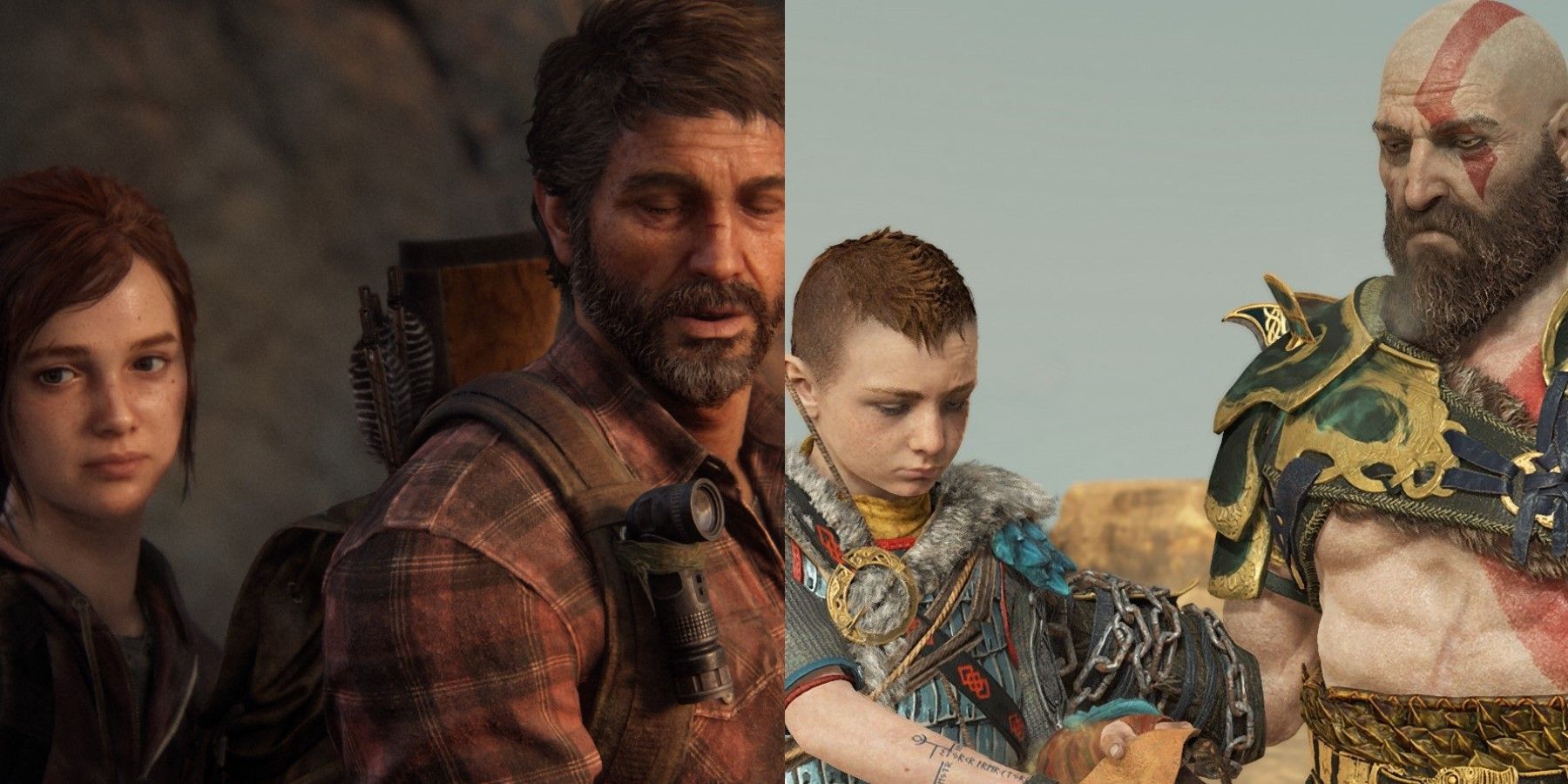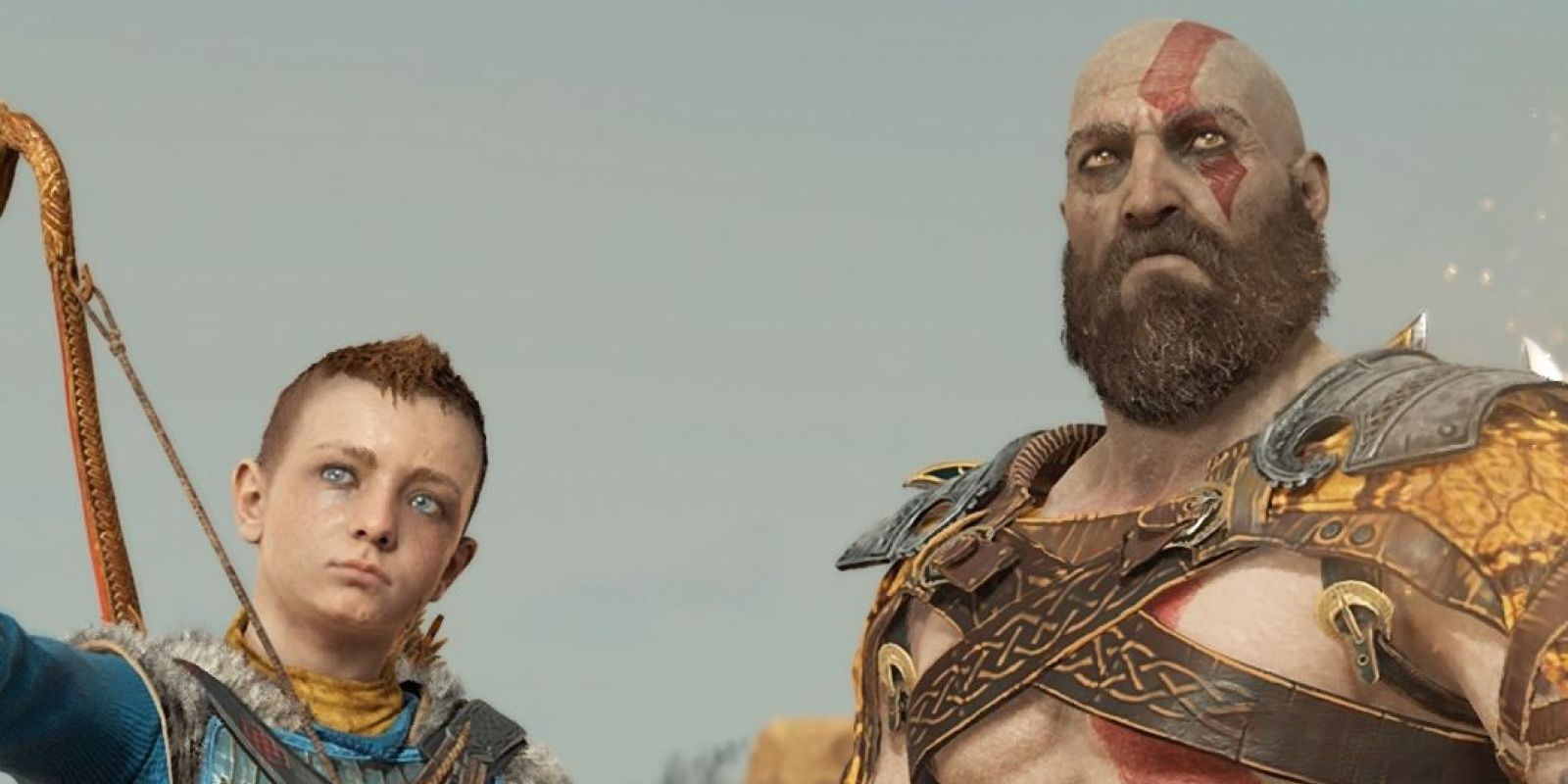God of War Ragnarok will see Kratos and his son, Atreus, making a return. Atreus served as his loyal sidekick in 2018’s God of War, but trailers have shown him taking on more of a leadership role in the upcoming game. This, along with prior hints of Kratos’ demise, suggest that players may find themselves taking control of Atreus as the primary protagonist.
Transitioning players from one character to another can be a tricky process, especially in narrative-driven games where gamers grow attached to a single character. If God of War Ragnarok plans on trying this, it should take some advice from Naughty Dog’s The Last of Us series, which has done it successfully a couple of times. It appears that the trick lies in making various characters feel adequately different enough, which gives weight and meaning to the character switch.
Switching Playable Characters in The Last of Us
A noteworthy aspect of the first The Last of Us game is its inclusion of multiple playable characters. Gamers switch between three characters throughout the game’s story. In the beginning, players briefly control Sarah, who is Joel’s daughter. Following Sarah’s shocking death, Joel becomes the only playable character for a large portion of the game. There is a brief period toward the end of the game when Joel is gravely injured. This leaves players to take control of Ellie, who must fend for herself and protect Joel as he recovers.
The Last of Us Part 2 also features three playable characters. However, they're employed in a notably different fashion. While the first game only gives gamers control of characters that stand on one side of a conflict, The Last of Us Part 2 gives an almost equal amount of playtime to two characters who are each other’s worst enemies. In doing so, players see multiple perspectives of a central conflict. Gamers get to control Joel and Ellie, which is expected. However, gamers also control Joel’s murderer, Abby, which is a shocking turn of events.
It is debatable whether the dramatic perspective switches of The Last of Us Part 2 work on a narrative level. Some gamers who love Joel find themselves unable to empathize with Abby regardless of how much time they spend with her. By the end of the game, many still see Abby as The Last of Us Part 2's villain. However, there is a good argument to be made that the switching of playable characters functions splendidly on a gameplay front. This is mostly because every character feels different in terms of their movement and abilities.
Ellie, who is much younger than Joel, is far nimbler and more flexible. Hence, she can jump, go prone, and crawl with ease. Abby, who is brawny, easily knocks out her opponents with her fists, and players feel her power when they take control of her, but they also feel her vulnerabilities. This occurs when she is in high places that trigger her vertigo. This causes the camera to begin swaying, giving players the same sense of imbalance that she experiences.
What God of War Can Learn From The Last of Us
With 2018’s God of War, the series decided to reinvent itself. Kratos still serves as the protagonist, but he doesn’t handle things alone any longer. He is joined by Atreus who is skilled with a bow. Together, they make a deadly team, although they do quibble occasionally. With God of War Ragnarok, the duo will be back, though it is uncertain whether they will make it to the end of the game together.
In God of War, there are hints that Kratos’ time may be up. Nothing is definitive, as Kratos has shown his ability to defy fate, but fans are definitely on their toes. It would not be entirely unexpected for gamers to find themselves playing as Atreus without Kratos around, even if it is only a temporary red herring.
Changing the playable character can be an exciting moment, though it must be handled correctly. If Ragnarok decides to go this route, it can learn a thing or two from The Last of Us. Most importantly, different characters should feel different when they are being controlled. If Atreus becomes the primary controllable character, he should not be as heavy as his father, nor should his fists feel as powerful. Instead, he should be light on his feet and have the kind of flexibility that matches his body type.
This kind of attention to detail ensures players remain immersed as they switch between characters. It also makes the change in perspective feel meaningful, as opposed to it merely being a change in the playable character’s skin. Most importantly, it highlights what has been lost. In The Last of Us Part 1, while it may be nice to gain Ellie’s nimbleness, player’s do miss Joel’s size and strength. This makes players appreciate him far more. Similarly, being forced to play as Atreus, and realizing that he lacks many of the things that make Kratos great, will only increase appreciation for the Spartan warrior among players. While Atreus can certainly bring new things to the table, having him control differently will remind players that Kratos can never truly be replaced.
Though things seem grim for Kratos, the upcoming game does not necessarily need to spell his end. It is worth keeping in mind that Santa Monica is quite fond of misdirecting fans to spring big surprises onto them. Nevertheless, if the Spartan warrior wishes to survive he will have to overcome great challenges and face off against powerful foes like Freya, Thor, and Odin. Whether Kratos will survive or whether Atreus will be walking the final chapter alone remains to be seen.
God of War Ragnarok is releases on November 9, 2022, on PS4 and PS5.



